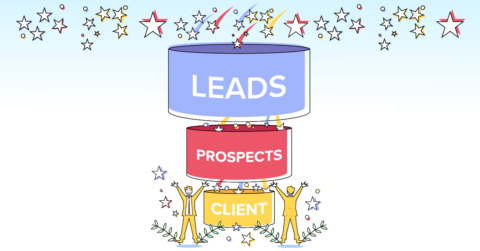
Visual Storytelling In Nonprofit Marketing
12/07/23
digital design
Increasingly, people are driven to action by compelling pictures and videos. Often, text on its own is simply not enough. This is why visual storytelling in nonprofit marketing can be so powerful.
Today, we are covering why visual storytelling is such an effective strategy for nonprofits. We also include five tips to keep in mind if you want to get
Why Visual Storytelling In Nonprofit Marketing Is Important
Generally, storytelling is a great marketing strategy. Pair it with a quality visual component, and it’s even more effective. Here are four reasons why visual storytelling is so important for nonprofits – and why they need to take it seriously:
- Emotional Resonance: Visual storytelling has the unique ability to evoke emotions. Use powerful images or videos, and you affect the viewer on a deeper emotional level. This leads to quicker connection, empathy and understanding.
- Memorability: Looking to actually get remembered? Visual storytelling is how you do it. People have increasingly smaller attention spans. If you want to stand out (and for people to actually remember your nonprofit), great stories told visually are a great place to start.
- Global Accessibility: If you are a larger nonprofit that is trying to reach people around the world, a language barrier is inevitable. That is – if you rely exclusively on the written word. This is where visual storytelling can help. A well-crafted image or video can convey your organization’s mission without the need for translation. This allows you to reach a global audience.
- Inspires Action: The online world is bombarded with information. If you want people to act, your message needs to stand out. Visual storytelling is how you can make this happen. The more emotionally powerful your story, and the deeper you affect your audience, the more likely they are going to act on what they see.
Visual storytelling makes people feel things in a way few other mediums can. It is emotionally impactful. It makes your organization stand out, and gives people the extra push they need to take action.
Now that we know why it’s important, let’s dive into specific strategies for visual storytelling.
5 Tips For Visual Storytelling In Nonprofit Marketing
1) Know Your Audience
This is perhaps foundational knowledge to any type of marketing you want to do. The fact is, if you want to connect more deeply with your visual storytelling, you need to know who you are speaking to. This is how you ensure your storytelling actually resonates with your target audience.
You might also conduct audience research. This is how you come to understand them more deeply and is a great starting point for crafting effective stories. Once you do, you will understand the kinds of stories they most want to see. Start creating them based on this insight.
2) Leverage Social Media Platforms
Social media marketing is great for a number of reasons. First, it’s where people spend time. If you want to reach your audience, social media platforms are a great place to do it. It’s also well-suited to videos and images. This visual component is an essential part of social media’s very nature. This all makes it particularly effective for visual storytelling in nonprofit marketing.
That said, make sure you are tailing your visuals to the particular platform for maximum effectiveness. This ensures that people are seeing the kind of content they actually want to consume.
3) Encourage User-Generated Content
As important as it is for your audience to actually see the people you help, user generated content (UGC) can also be effective. In the context of a nonprofit, UGC can be anything from videos made by volunteers to pictures posted by donors. Authenticity is the name of the game here. UGC can play a vital role in visual storytelling because it shows people the real side of your nonprofit. You’re not a faceless organization. Instead, you are made up (and helped) by real people.
You can also encourage supporters to contribute their own content. Not only will this diversify your narrative, but it fosters a sense of community as well.
4) Create Compelling Videos
It’s undebatable: video is on the rise. More and more people consume video as their preferred type of content, and the numbers will only continue to increase. If you’re serious about visual storytelling, you need to invest properly in video. Be sure to check out best practices for video marketing. This makes it more likely that you create videos that are both compelling and convincing.
As for the types of videos you make? As a nonprofit, you have a ton of different options. Consider videos that showcase the journey of your nonprofit, share success stories, and most importantly, create videos that showcase the people that you have helped. This is usually the most compelling for your audience.
5) Link It To Action
The reason you are investing in visual storytelling at your nonprofit is to get people to act. As great as your video might be, if it’s not attached to a clear goal, it’s often simply not worth the time. This is why you need to have a “next step” in mind for every piece of content you create. Is this signing up for your email list? Maybe it’s a more direct call to make a donation? Or perhaps you are looking for volunteers, and the action you want them to take is filling out an application.
Whatever it may be, a clear next action for your audience to take is essential. This makes things clear and understandable for your audience, and brings your organization closer to its ultimate goals.
…
Are you an enterprise, nonprofit or small business looking for help on your website? Give us a shout! We provide a free consultation. Email us at info@lughstudio.com or call us at (718) 855-1919!









